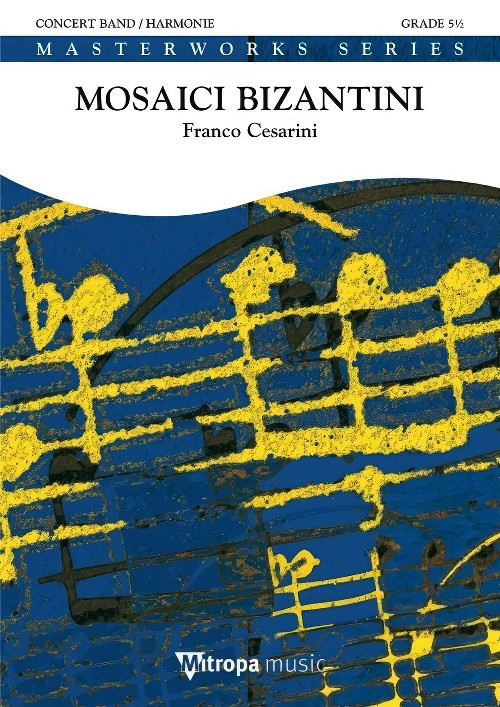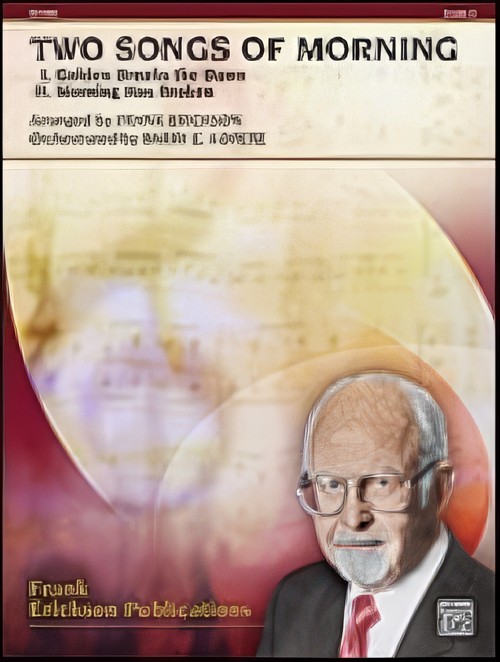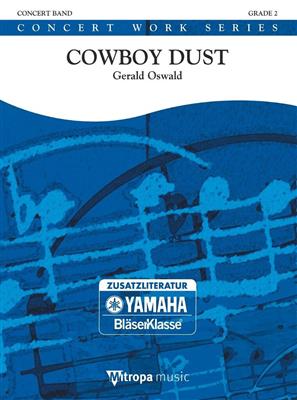Results
-
 £84.99
£84.99Laurena (Concert Band - Score and Parts) - Nijs, Johan
For this composition, the Flemish composer Johan Nijs takes his inspiration from people and events in his life. It was written for the birth and is dedicated to his daughter Laurena. It's beautiful simple melodic lines makes it a perfect item to bring a little peace and calm any concert.Duration: 3:15
Estimated dispatch 7-14 working days
-
 £233.50
£233.50Mosaici Bizantini (Concert Band - Score and Parts) - Cesarini, Franco
Three Byzantine mosaics, to be seen in churches in Venice and Palermo inspired Franco Cesarini to compose this work. He took the musical motives from Gregorian chants. The mosaics concerned depict the following extracts from "The Gospel According to St. Matthew".I. The Nativity: The Magi from the East: "Where is the new-born King of the Jews? For we have seen his star in far-off eastern lands and we have come to worship Him."II. The Temple of Jerusalem: And look! The curtain secluding the Holiest Place in the Temple was split apart from top to bottom: and the earth shook and rocks broke, and tombs opened and many godly men and women who had died, come back to life again.III. Angel of the Resurrection: An angel of the Lord come down from heaven drew near, rolled away the stone and sat upon it. His countenance was lightning and his attire white as snow.Duration: 19:45
Estimated dispatch 7-14 working days
-
 £79.20
£79.20Kyrie and Gloria (Concert Band - Score and Parts)
Powerful, exciting, emtionally charged and moving are just a few words that best describe this work in which, in the composer's own words is "my best and most satisfying". "Alleluias" musically portrays the life, crucifixion and resurrection of Jesus Chirst. Truely outstanding!
Estimated dispatch 7-14 working days
-
 £45.95
£45.95TWO SONGS OF MORNING (Concert Band) - Erickson, Frank
Two Songs of Morning contains two beautifully contrasting melodies, scored to demonstrate the lush tonal capabilities of the concert band. The Gaelic Melody used in movement tow is the well-known "Morning has Broken". Upon conclusion of the eight-bar introduction, the first presentation of the theme appears in the first trumpet accompanied by the expressive style throughout the movement, and students will enjoy the challenge of having to play the extended phrases needed to bring this music to life.
Estimated dispatch 7-14 working days
-
 £144.99
£144.99Vents Catalans Wind Band Set (Score & Parts)
Vents Catalans (Catalan Winds) is a symphonic fantasy which, while it does no directly reference any melody or song from Catalonian folk music, still manages to convey all the life, beauty and energy of this charming region in southern Spain. After a triumphant and majestic introduction, reminiscent of folksongs and lively dances, the mood calms down with an elegant, yet playful, melody, followed by the Sardana, the traditional Catalonian dance par excellence. 09:50
Estimated dispatch 7-14 working days
-
 £76.99
£76.99Souvenir De Porto Rico - Louis Moreau Gottschalk
Gottschalk didn't live long enough to leave a large catalogue, but the works he brought to the public were quite popular in their day. This is one of his more well-known works, skillfully rendered for band by Michael Brignolo. It brings the vivid colors and sounds of the Caribbean to life.
Estimated dispatch 7-14 working days
-
 £124.99
£124.99Black Gold - Thierry Deleruyelle
Black Gold was commissioned by Musikverein 1891 "Harmonie" Saarwellingen e.V. (Germany) to mark its 130th anniversary. This composition pictures the history of the mining industry in the town of Saarwellingen and its surrounding region, where the life of the miners as well as their families revolved around coal, or black gold, for centuries on end. The piece is based on motifs from the famous song "Glck auf, Glck auf, der Steiger kommt..." ("Good luck, good luck, the mining foreman comes"), a veritable anthem for miners the world over.
Estimated dispatch 7-14 working days
-
 £47.50
£47.50Cowboy Dust - Gerald Oswald
In this work, the composer depicts an adventurous day in the life of a cowboy. As he rides his horse across the plains, clouds of 'cowboy dust' whirl up behind him. He rides over the prairie, faces dangerous snakes, gallops across dusty fields and stumbles upon an ambush of bandits. In the gunfight that follows, he is the victor, and he rides along the prairie a silent hero, on his way to another adventure.
Estimated dispatch 7-14 working days
-
 £149.99
£149.99Da Vinci - Johan de Meij
The fascinating life of Leonardo da Vinci and his enormous curiosity spurred Johan de Meij to experiment with musical material, by using only the ivory keys of the piano during the composition process. DA VINCI opens with a grand, massive chord over five octaves throughout the orchestra. This chord, the Da Vinci Chord, is the connective tissue between the various sections, and it leads to a radiant C major chord, as an ode to one of the greatest geniuses of all time.
Estimated dispatch 7-14 working days
-
 £183.99
£183.99Three Norwegian Sketches - Philip Sparke
Three Norwegian Sketches was commissioned by ...ndalsnes Musikkforening, Norway, who are conducted by John Hudson. The three contrasting movements - TROLLVEGGEN (The Troll Wall), RAUMA ELV (River Rauma) and RAUMABANEN (The Rauma Line) - describe life and scenery around the town of ...ndalsnes on the beautiful west coast of Norway. This is a challenging, imaginative and versatile new work, ideal for a concert or a contest.
Estimated dispatch 7-14 working days
